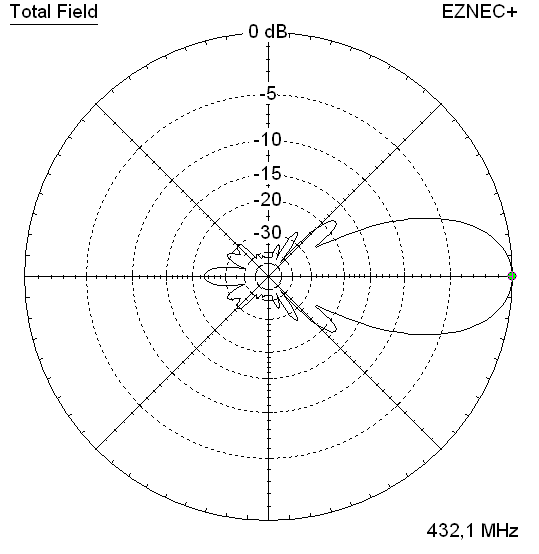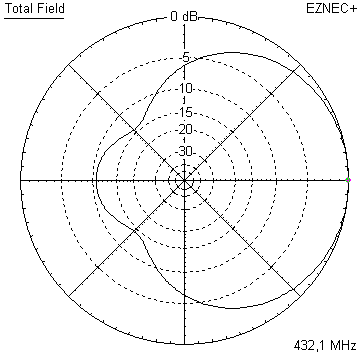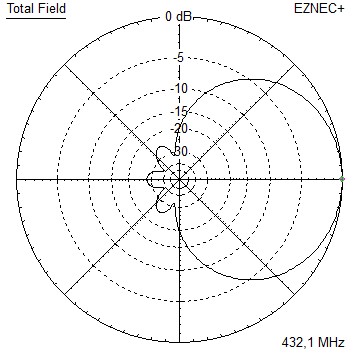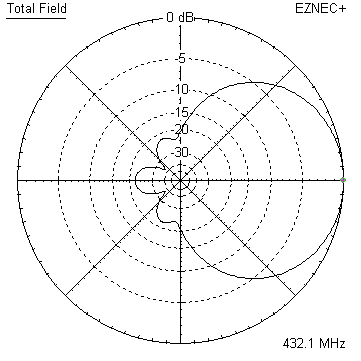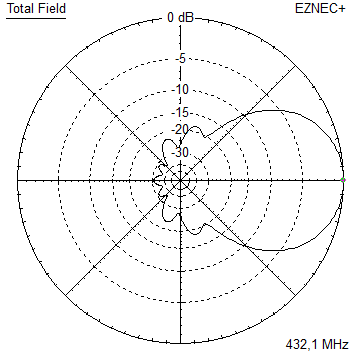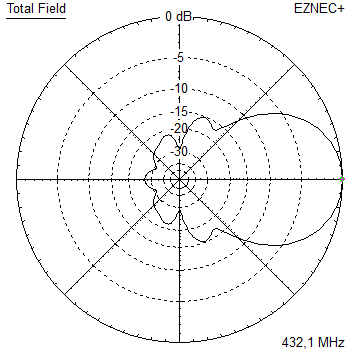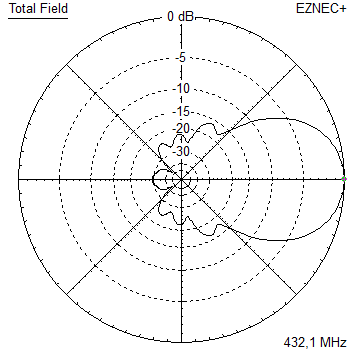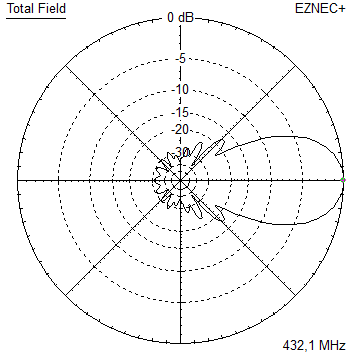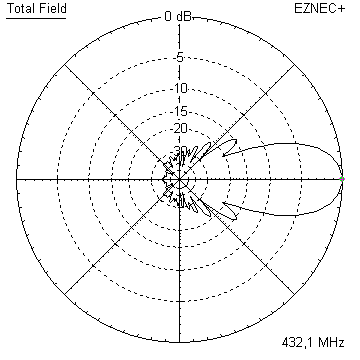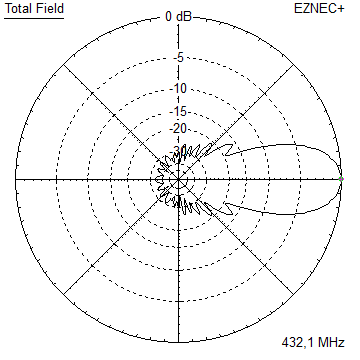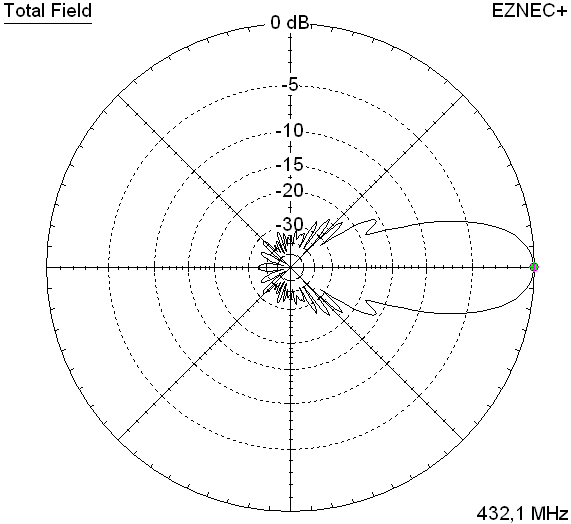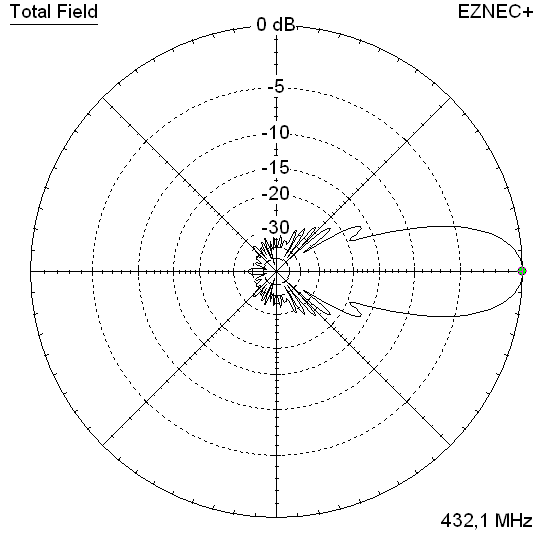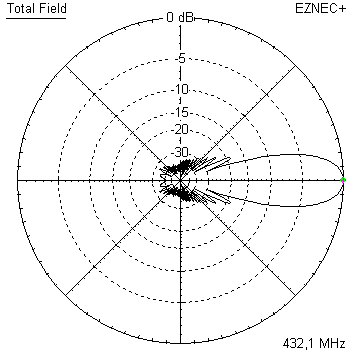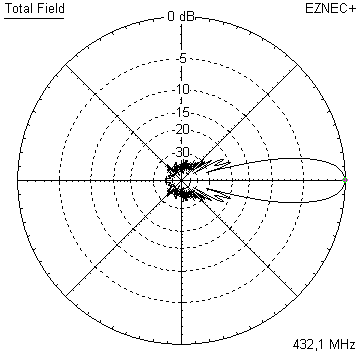
GTV 70-6m Yagi with bent Driven Element
This Yagi shows quite a low Antenna Temperature and a moderate gain for its length, which altogether leads to a good G/T number.
The shape of the rear lobes perdestines it for larger vertical stacks.
It may serve as a contest stack or post stamp size QRPP EME 4-Yagi-Bay. This Yagi is the scaled version of the GTV 2-6m.
The bent DE (K6STI style) transforms to 50 ohms at feed point for direct feed. Design date of issue: 2025.10.26 .
Current distribution
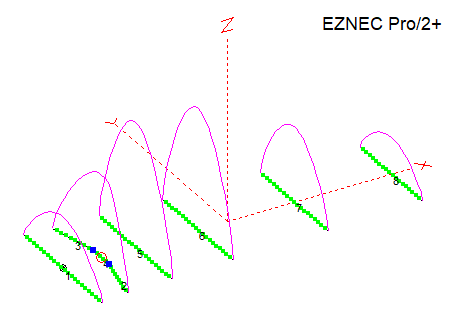

Performance Data
Specs: with 8 mm elements @ 432.1 MHz
Gain vs. isotr. Rad. 11.9 dBi Gain vs. Dipole 9.8 dBD -3 dB E-plane 46.4 deg. -3 dB H-plane 56.2 deg. F/B -30.3 dB F/R -22.8 dB Impedance 50 ohms Mechan. Length 866 mm incl. 2 x 40 mm stand off Electr. Length 1.13 λ Stacking dist. h-pol. (100 percent per DL6WU) top-to-bottom 0.737 m or 2.42 ft side-by-side 0.881 m or 2.89 ft
How many OMs have been looking up this design since Oct. 2025?
Geometry
Bent Dipole: DE(a) is the inner straight length and pos. on boom, DE(b) is position of tips and span width when bent

|
• Drawing of the blade dipole as PDF, • The Dipole of the GTV 70-9w fits the GTV 70-10w nicely (tnx Thomas, M0ABA for measuring this!) |

The model uses EZNEC's Auto-Segmentation at 1050 MHz.
The DE's is 10 mm for all examples.
Using a 'Blade Dipole' is recommended with elements through boom
A simple symmetrising section may be made from a 3 x 1/4 Lambda line grounded at the far end with
N-flange-bushing and an aluminium plate and ferrite core added as close as possible to the DE,
see below.
This Yagi with 8 mm elements on a 15 x 15 mm boom with standard insulators

|
Ele. 8.0 mm DE 10.0 mm Boom 15 x 15 mm |
|
"Ready to saw and drill" data for mounting elements on boom with BC according DG7YBN for standard insulators
as sold by WiMo, Tino's Funkshop, HF-Kits NL, 7arrays:
You may alter the rear offset as long as you keep a minimum of 40 mm, it will not influence an 'on boom' BC.

Building hints:
For building hints see the GTV 70-19
For fastening elements through boom
For making of a 'Blade Dipole'
Radiation Pattern and VSWR Plots
Elevation and Azimuth plot at 432.1 MHz (Elements 8 mm)
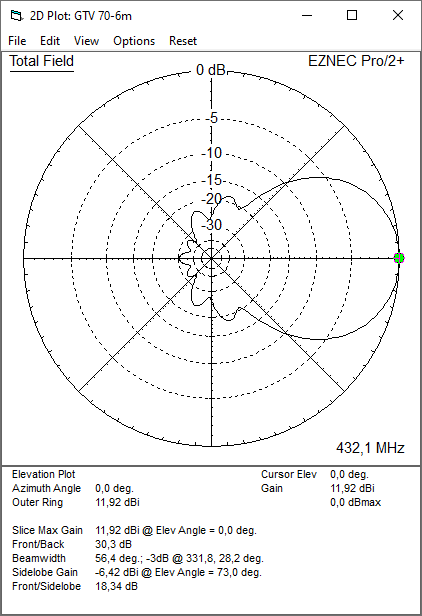
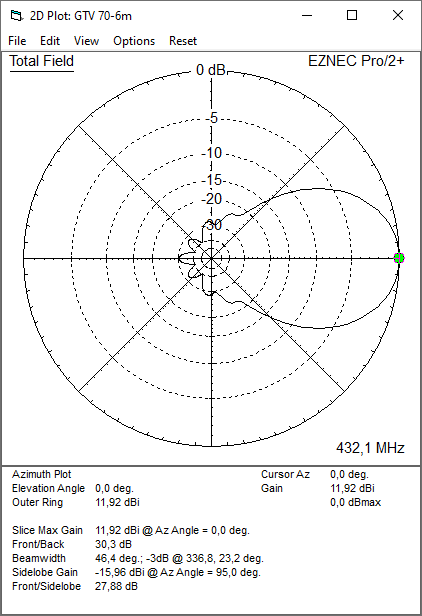
VSWR and Return Loss (S11)
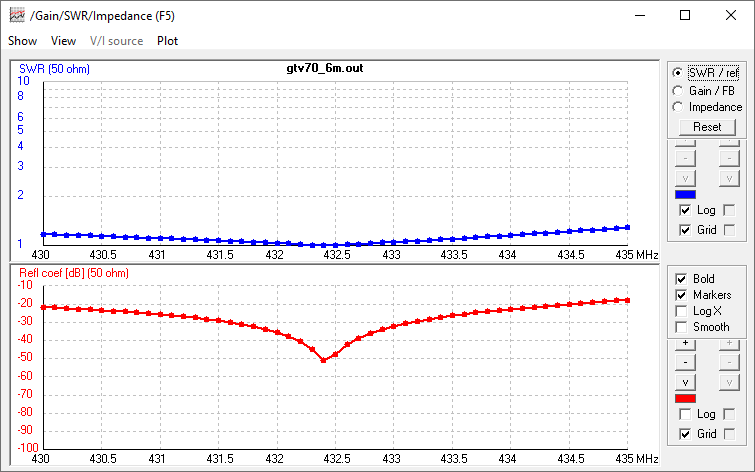
Downloads
none so far
Stacking
Stacking Dist. DL6WU Formula H-plane 0.737 m E-plane 0.881 m
4 Yagi stack in H shape
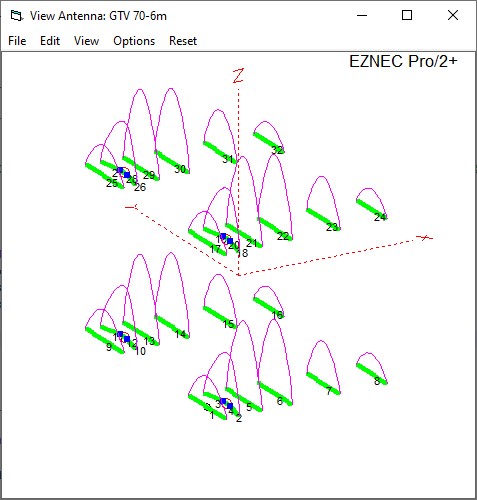
Elevation and azimuth plot and data of 4 Yagi bay using DL6WU stacking distances


Gain vs. isotr. Rad. 17.91 dBi Gain vs. Dipole 15.76 dBD -3 dB H-plane 25.0 deg. -3 dB E-plane 20.6 deg. F/B -32.4 dB F/R -23.4 dB T_ant 110.7 K* G/T -2.54 dB*Theoretical numbers - these do not include phasing line losses
nor imperfections caused by H-frames or mast poles etc.
*) T_sky = 27 K, T_earth = 1800 K as in newer VE7BQH G/T table
Screenshot of the Excel VBA AGTC-2lite for this 4 Yagi stack
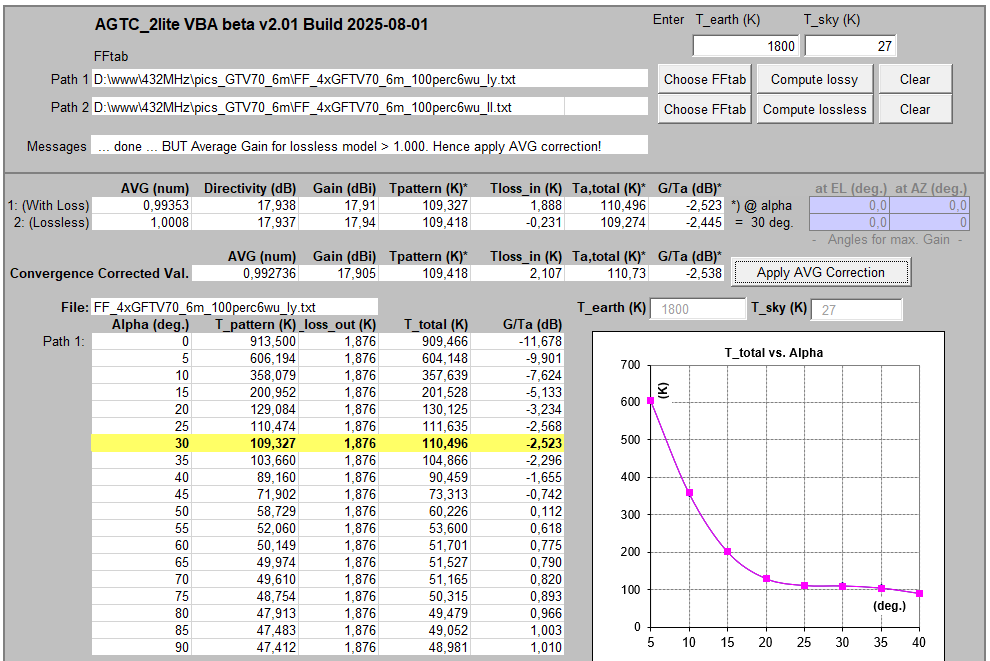
A vertical 4 Yagi stack
stacked at 733 mm: 17.9 dBi at a HPBW of 46 degr. on just 2.2 m of height on pole
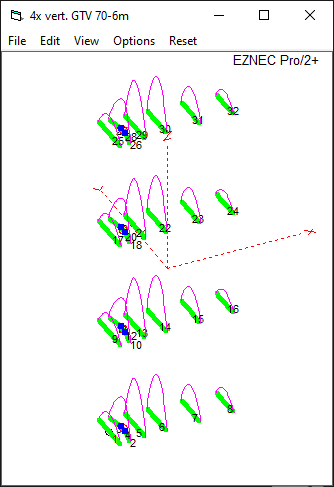

A vertical 8 Yagi stack
stacked at 733 mm: 20.9 dBi at a HPBW of 46 degr. on just 5.13 m of height on pole
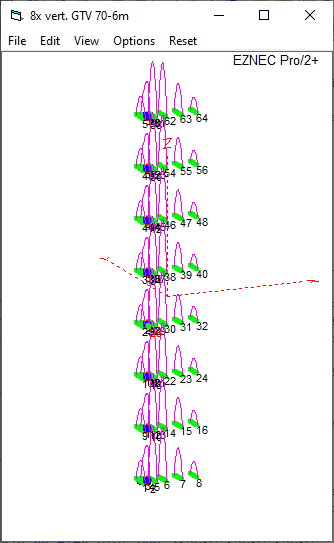
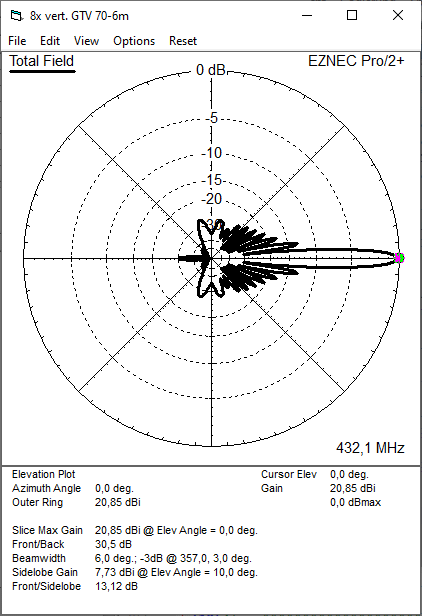
A 2 x 180 deg. vertical 4 Yagi stack
stacked at 733 mm: increased F/B by optimised distance Refl. to Refl. of 725 mm
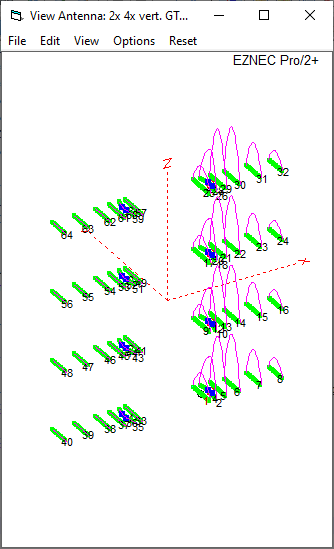
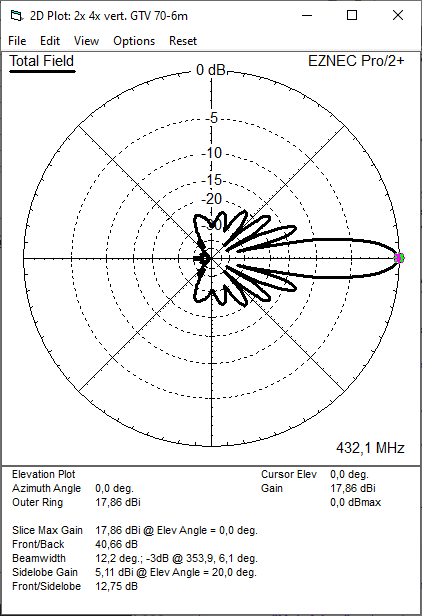
A brief description of this array of 2 x 180 deg. 4 x vert. GTV 70-6m
Symmetrising 50 to 50 ohms feedline to 432 MHz Bent DE
The principle is similar to the 1/4 Lambda coax. Adding 2 x 1/4 Lambda or a half wave line does not change anything but allows
to form a gentle bow below the boom or until behind the Reflector. Follow practical construction hints on "Building a Yagi" page.
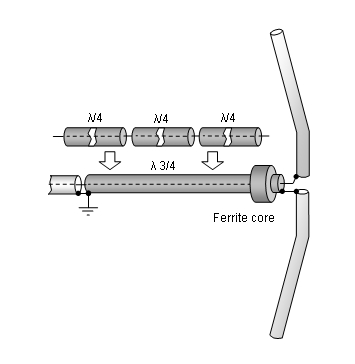

 Attenzione!
Take care when lengthening the coax, measure the actual electrical length instead of considering v-factors specified in a catalogue only.
Attenzione!
Take care when lengthening the coax, measure the actual electrical length instead of considering v-factors specified in a catalogue only.A good choice may be the diam. 5 mm PTFE coax RG-142 B/U: real resonate length (432.2 MHz as 3/4 Lambda) shield-shield is around 348 mm
 Find more information on Phasing & Matching Lines page
Find more information on Phasing & Matching Lines page 73, Hartmut, DG7YBN


